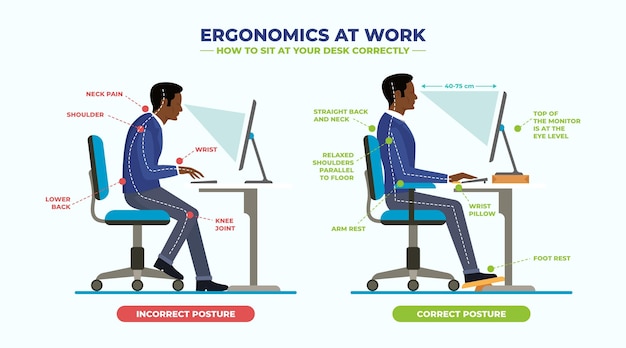Unlock Your Mobility: A Beginner’s Guide to Flexibility for Office Workers
Spending long hours at a desk can take a toll on your body. Stiff shoulders, tight hips, and lower back pain are common complaints among office workers. The good news? You don’t need a gym membership or hours of free time to combat these issues. Incorporating flexibility training into your daily routine can significantly reduce your risk of injury, improve posture, and boost overall well-being — even with a busy schedule.
Why Flexibility Matters for Desk Workers
Sitting for extended periods causes muscles to shorten and tighten, especially in the hip flexors, hamstrings, chest, and neck. Over time, this leads to muscular imbalances, poor posture, and increased strain on joints. Regular stretching helps restore balance, improves circulation, and enhances joint range of motion.
Improved flexibility isn’t just about touching your toes — it’s about moving through your day with ease, reducing discomfort, and preventing repetitive strain injuries that develop slowly but can become chronic.

Maintaining good posture starts with flexible, balanced muscles.
Simple Stretches to Start With
You don’t need to become a contortionist. Focus on consistency, not intensity. Try these beginner-friendly stretches, each taking less than a minute:
- Neck Tilts: Gently tilt your head side to side, holding each for 20–30 seconds to release tension from screen gazing.
- Shoulder Rolls: Roll shoulders forward and backward in slow circles to relieve upper back stiffness.
- Seated Forward Bend: Sit on the edge of your chair, extend legs, and reach toward your toes to stretch hamstrings.
- Seated Spinal Twist: Sit tall, twist gently to one side, using the chair back for support. Hold for 20 seconds per side.
- Hip Flexor Stretch: Stand and step one foot back into a gentle lunge, keeping your torso upright to stretch tight hip flexors.
How to Track Your Progress
Tracking keeps you accountable and shows how far you’ve come. Here are practical ways to monitor your flexibility journey:
- Flexibility Journal: Note which stretches you do, how long you hold them, and how they feel each day.
- Range-of-Motion Check: Measure progress by observing how much deeper you can reach in a forward bend or how easily you can turn your head side to side.
- Weekly Photos: Take a side-profile photo every week in a consistent stretch (like a seated forward fold) to visually track improvements.
- App Integration: Use habit-tracking apps to log daily stretching and set reminders during work breaks.

Tracking your flexibility helps maintain motivation and consistency.
Stay Motivated: Cues That Work
Motivation fades — that’s normal. Build sustainable habits with these cues:
- Habit Stacking: Pair stretching with an existing habit, like after checking email or before lunch.
- Visual Reminders: Place a sticky note on your monitor or set a desktop wallpaper with a stretch prompt.
- Micro-Sessions: Commit to just 2 minutes — often, starting is the hardest part, and you’ll likely do more once begun.
- Reward System: After a week of consistent stretching, treat yourself to something small and healthy, like a new tea or a relaxing bath.
When and How Often to Stretch
For office workers, consistency beats duration. Aim for:
- Micro-Stretches: 1–2 minutes every hour — stand, roll your shoulders, or do a quick neck release.
- Dedicated Sessions: 10 minutes in the morning or evening to target major muscle groups.
- Dynamic vs. Static: Use dynamic movements (arm circles, gentle torso twists) during the day; save static holds (longer stretches) for after work or before bed.
Bonus Tips for Long-Term Success
- Hydrate: Muscles stretch better when well-hydrated. Keep a water bottle at your desk.
- Breathe Deeply: Inhale deeply before each stretch, exhale slowly as you ease into it — this helps relax muscles.
- Listen to Your Body: Stretch to mild tension, never pain. Flexibility gains come gradually.
- Combine with Movement: Take short walking breaks to boost circulation and support flexibility gains.
Final Thoughts
Improving flexibility isn’t about achieving perfect splits or advanced yoga poses. For office workers, it’s about reclaiming comfort, reducing injury risk, and feeling more energized throughout the day. Start small, stay consistent, and use simple tracking and motivational cues to build a sustainable routine.
Your body will thank you — one stretch at a time.
















